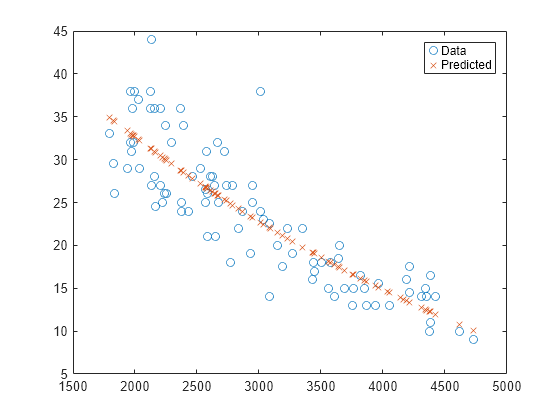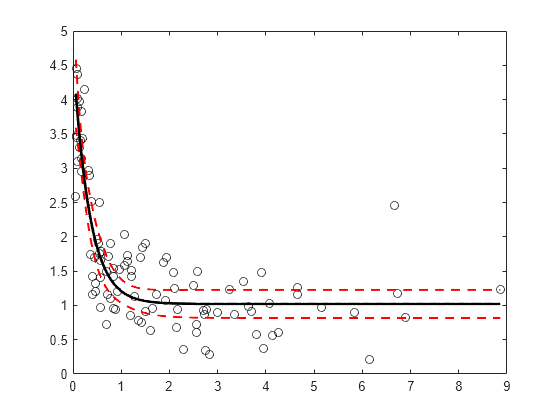predict
Predict response of nonlinear regression model
Syntax
Description
Examples
Input Arguments
Name-Value Arguments
Output Arguments
Tips
References
[1] Lane, T. P. and W. H. DuMouchel. “Simultaneous Confidence Intervals in Multiple Regression.” The American Statistician. Vol. 48, No. 4, 1994, pp. 315–321. Available at https://doi.org/10.1080/00031305.1994.10476090
[2] Seber, G. A. F., and C. J. Wild. Nonlinear Regression. Hoboken, NJ: Wiley-Interscience, 2003.
Version History
Introduced in R2012a

